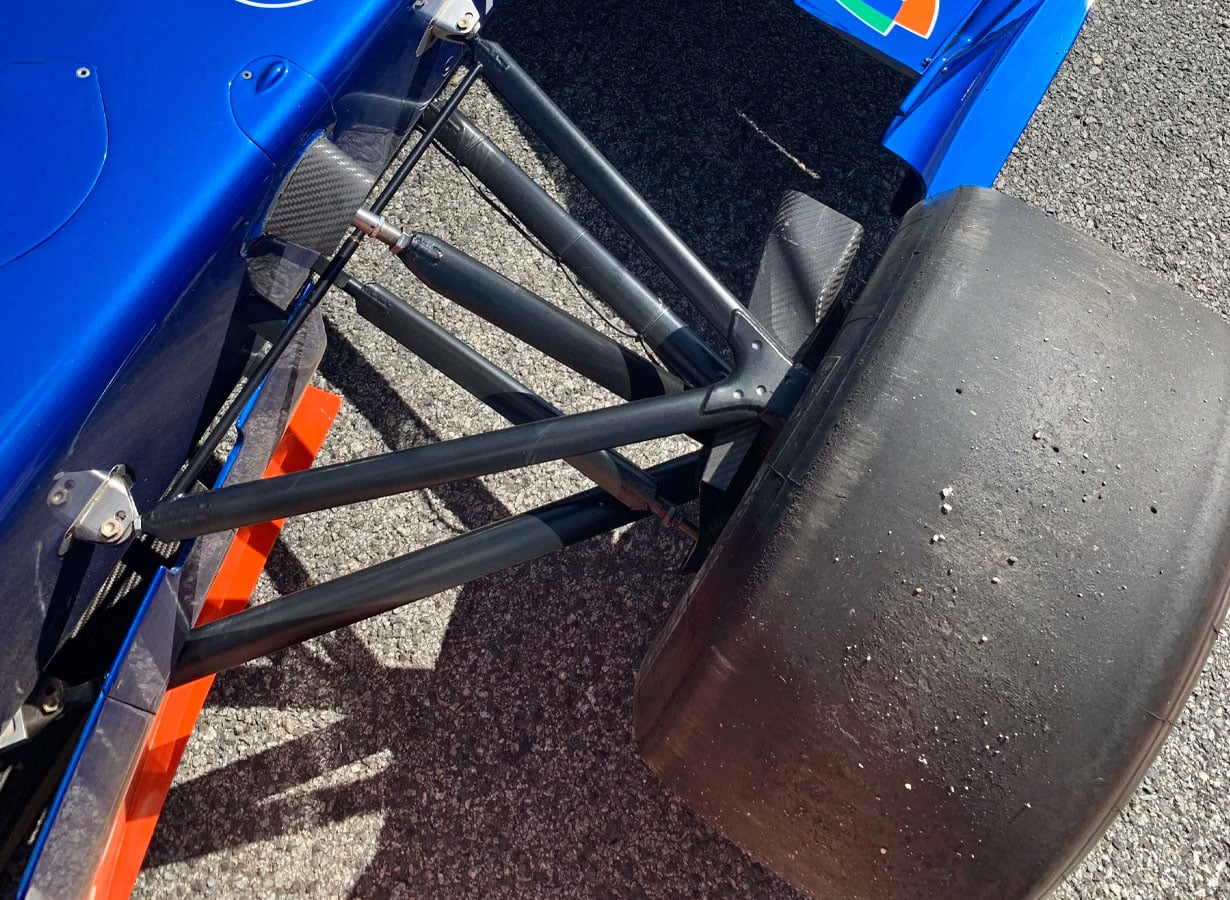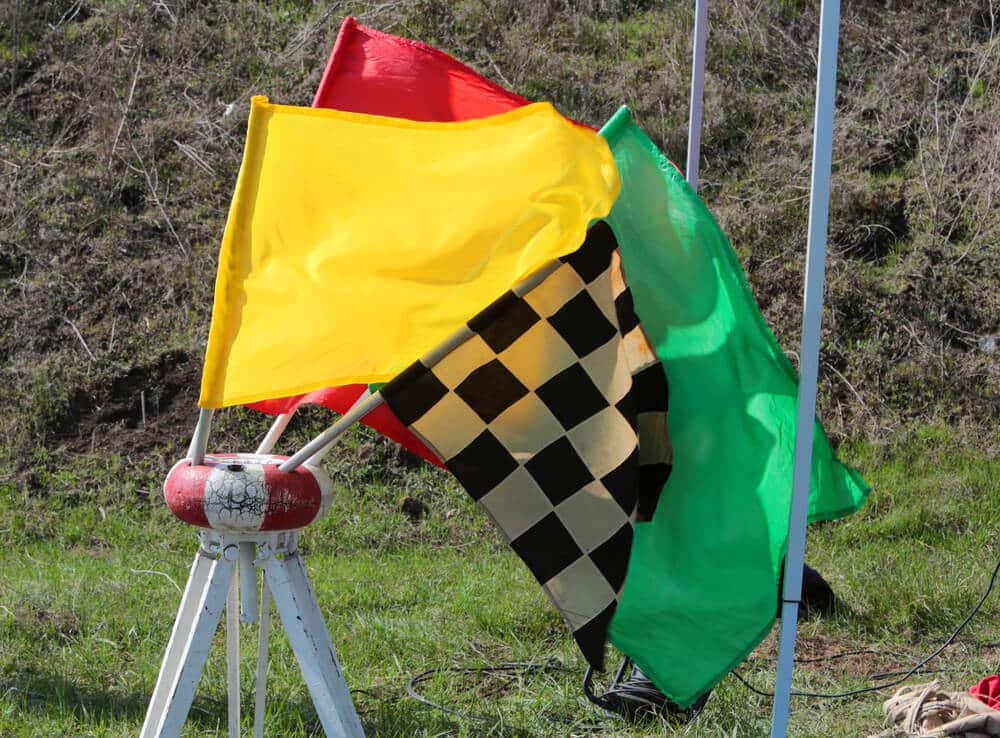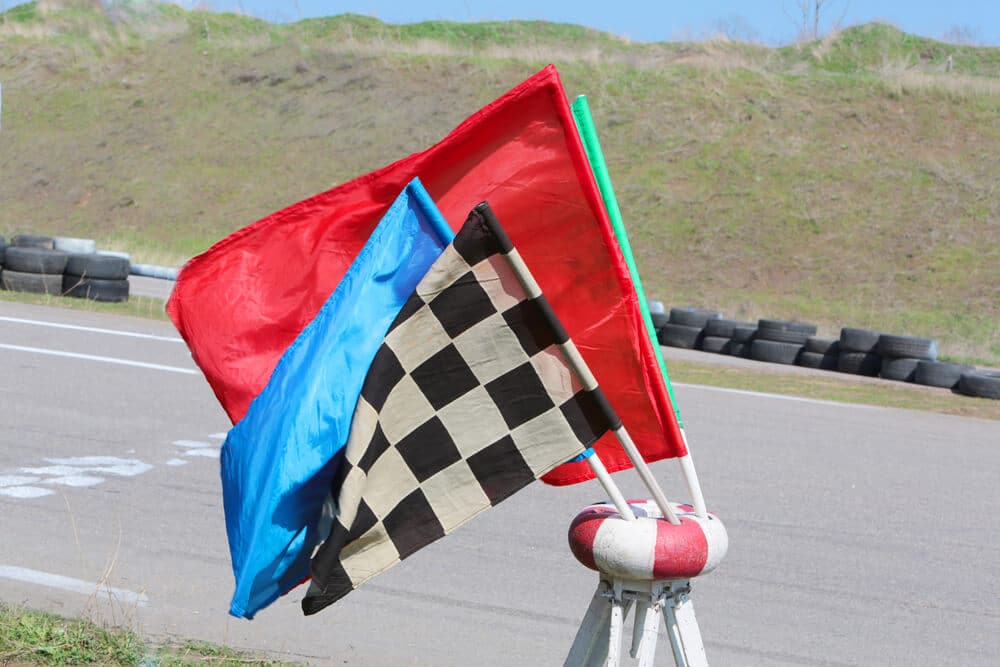Often while watching an F1 competition or any sportscar racing competition, in general, we come across borders that are painted red and white alternatively. What are these borders? Are they present to make the track look more beautiful and colourful? Or, are they a sign of danger?
Keep reading this article to learn about these red and white painted blocks on F1 racing tracks called Kerbs or Curbs.
Table of Contents
Watch this video to understand what Kerbs are used for in F1.
What does Kerb mean in F1?
Kerbs are the red and white painted borders on the tracks of the F1 race competition. They are one of the safety elements present on the F1 track that signify the track limits.
Key takeaways
- Kerbs are one of the safety elements placed on F1 tracks.
- They are mostly kept on the corners and edges of the racing tracks.
- Kerbs can be slippery or rough in texture.
- They help define the limits of the track for the drivers.
- They reduce the number of accidents whilst also helping in reducing the severity of those accidents.
- If an F1 car crosses a kerb, the driver may be penalised or receive a warning for his actions.

Photo showing a kerb on a Formula 1 track.
Understanding Kerbs
Just like everything else, the Kerb on an F1 track is way different from the Kerb on a regular street. However, one of the purposes remains the same, to notify the driver of the limits of the track.
There are many types of Kerbs being used in F1. One of the types is the border painted red and white with non-slip paint. Standard Kerbs are another type of curb with varying gradients to them placed around the track. Scraping Kerbs are the ones from which the driver suffers the most amount of penalty. They are painted in white and green colours and are very rough in nature, which makes it very easy for the driver to drive on them.
Why are Kerbs used on the F1 track?
The Kerbs define the track limits of the F1 race track. They don’t just separate the track from the outside, prohibited area, but the bright painted Kerbs help the driver to stay within the track to avoid damage to their car.
Kerbs also define the limits at which place one driver is allowed to overtake another driver. Crossing the kerb-defined track and overtaking another car will result in the overtaker losing the position he just gained. Repeated offences will lead to the driver being penalised even further.
However, drivers can cross the limits of the Kerbs if at least one of the car’s tires stays within the track limits. Crossing the limits with all four tires will result in a time penalty for the driver.
Some of the Kerbs are often rough which helps slow down the car when they cross the track, hence lessening the impact of the accident against the barrier.
Varying degrees
Varying degrees or sausage Kerbs are one of the main types of Kerbs in an F1 track. They are tall, slippery Kerbs, and are bolted upright to the ground to maximise their visibility to the driver. Varying degrees can be adjusted to different lengths depending on whether they are on the inside or outside of the corner or on a certain type of corner exit.
Some of the varying degrees are very shallow to the ground making it very easy for the driver to drive on them to gain a time advantage. However, most of the time, the speed of the car gets affected due to the curb being slithery and also increases the chance of the car skid whilst driving over them.
Fake Kerbs and artificial grass
Some of the Kerbs are lined with artificial grass so that the driver can recover and regain his grip when he moves off the track. However, these types of Kerbs are very dangerous during the rainy, wet season as water can accumulate over there making them very slippery.
Fake Kerbs are also known as scraping Kerbs. They are multiple types of Kerbs placed in the same place on the track. These Kerbs have a lot of grip on them but they often damage the exterior of the car if the driver drives onto them.
Why are varying degrees so criticised by the people and F1 drivers?
Varying degrees have been quite successful to amplify safety and reinforce the track limits for the drivers. However, they have sparked many controversies and are criticised by many.
Varying degrees have deterred the drivers from driving around the corners of the track at high speeds. If a driver goes over a varying degree at a high speed, he could have himself receive warnings, and penalties, and even have his time lap cancelled.
Varying degrees are at great heights and are very slippery in texture. A driver crashing onto them can result in his car going several metres up in the air, which results in horrendous crashes, like the ones in Monza in 2019 and 2021.
For these reasons, many drivers and viewers have lodged complaints about varying degrees several times. There have been several modifications done by the FIA to make them as safe as possible. However, they have still not decided to remove varying degrees from the tracks of F1 and it looks like they are here to stay for now.
Varying degrees have been quite successful to amplify safety and reinforce the track limits for the drivers. However, they have sparked many controversies and are criticised by many.
Frequently asked questions about Kerbs
What are Kerbs for in F1?
Why do F1 drivers hit Kerbs?
What are F1 Kerbs made of?
What are sausage Kerbs in F1?
Why are Kerbs usually painted red and white?
Conclusion
Kerbs are one of the most important safety elements on the tracks of F1. They help the driver to stay on the tracks and have significantly reduced the number and severity of accidents.
However, there have been constant modifications to the Kerbs to make them as safe as possible by the FIA. This is why drivers take track walks before every event to make themselves familiar with the track and its elements, especially the Kerbs.
Article sources
Learn more about Formula One
Want to learn more about F1? Then visit our Formula 1 glossary and dictionary.



